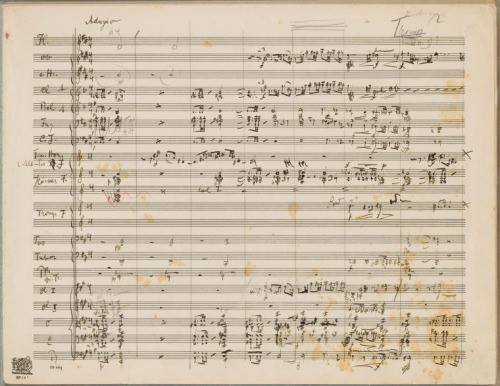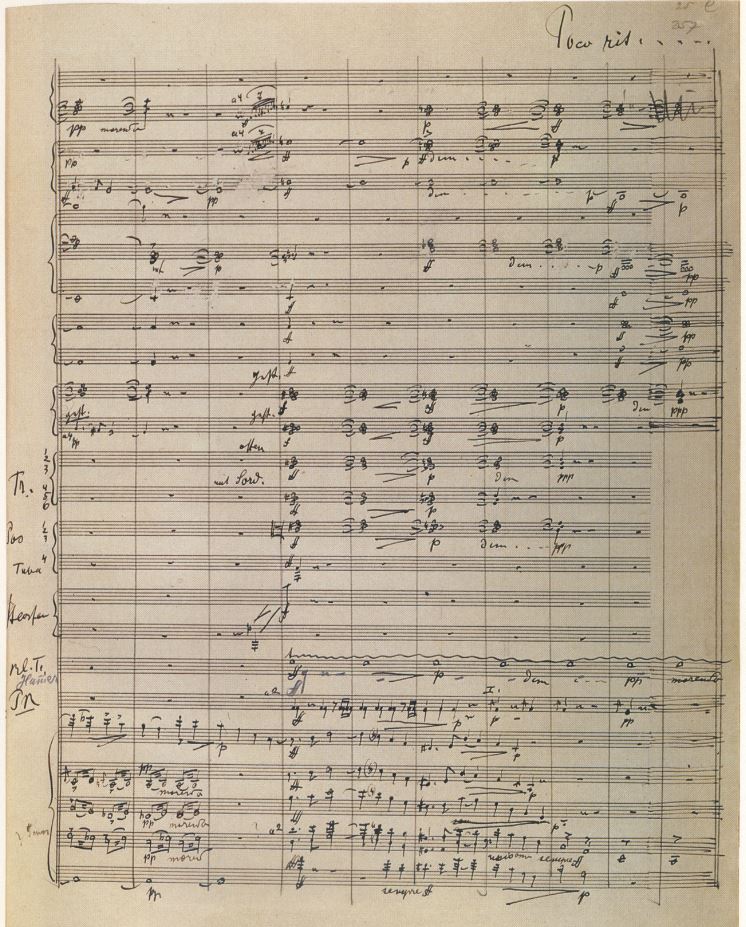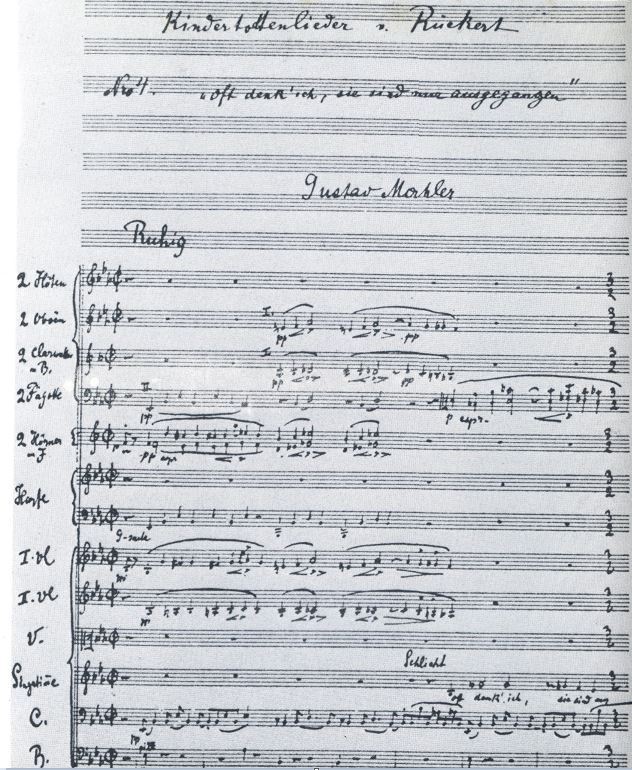Movement 3: Scherzo. Schattenhaft
Scherzo. D minor – The German marking ´Schattenhaft´ means ´Shadowy´. Flowing but not too fast. There is an undercurrent of night about the spooky third movement; while “Scherzo” means “joke”, this movement is remarkably spooky and even grim. If the first ‘Nachtmusik’ possessed a friendly mood disguised in grotesqueries, this movement is a demon sneering […]
Movement 2: Nachtmusik. Allegro moderato
Nachtmusik I. Andante, C major/minor. The movement opens with horns calling to each other. The second horn is muted, however, to create the illusion of distance. Scampering woodwinds imitating somewhat grotesque bird calls pass off into the distance, as the trumpets sound the major-minor seal from the sixth symphony. The horns introduce a rich, somewhat […]
Movement 1: Langsam (Adagio) – Allegro risoluto, ma non troppo

First movement. Moves from B minor (introduction) to E minor. The movement is in sonata form. It begins with a slow introduction in B minor, launched by a dark melody played by a baritone horn. The accompanimental rhythm was said to have come to Mahler whilst rowing on the lake at Maiernigg after a period […]
Movement 4: Finale (Allegro moderato)

The last movement is an extended sonata form, characterized by drastic changes in mood and tempo, the sudden change of glorious soaring melody to deep agony. The movement is punctuated by three hammer blows. Alma quoted her husband as saying that these were three mighty blows of fate befallen by the hero, “the third of […]
Movement 3: Scherzo
The scherzo marks a return to the unrelenting march rhythms of the first movement, though in a ‘triple-time’ metrical context. Its trio (the middle section), marked Altväterisch (‘old-fashioned’), is rhythmically irregular (4/8 switching to 3/8 and 3/4) and of a somewhat gentler character. According to Alma Mahler, in this movement Mahler “represented the unrhythmic games […]
Movement 2: Andante moderato
The andante provides a respite from the intensity of the rest of the work. Its main theme is an introspective ten-bar phrase in E-flat major, though it frequently touches on the minor mode as well. The orchestration is more delicate and reserved in this movement, making it all the more poignant when compared to the […]
Movement 1: Allegro energico, ma non troppo
The first movement, which for the most part has the character of a march, features a motif consisting of an A major triad turning to A minor over a distinctive timpani rhythm. The chords are played by trumpets and oboes when first heard, with the trumpets sounding most loudly in the first chord and the […]
Lied 5: In diesem Wetter
In diesem Wetter In diesem Wetter, in diesem Braus, Nie hätt’ ich gesendet die Kinder hinaus! Man hat sie getragen hinaus, Ich durfte nichts dazu sagen! In diesem Wetter, in diesem Saus, Nie hätt’ ich gesendet die Kinder hinaus! Ich fürchtete, sie erkranken; Das sind nur eitle Gedanken, In diesem Wetter, in diesem Graus, […]
Lied 4: Oft denk’ ich, sie sind nur ausgegangen

Score Kindertotenlieder – Lied 4: Oft denk’ ich, sie sind nur ausgegangen Oft denk ich sie sind nur ausgegangen! Oft denk ich sie sind nur ausgegangen! Bald werden sie wieder nach Hause gelangen! Der tag ist schön! Oh sei nicht bang! Sie machen nur einen weiten Gang! Jawohl, sie sind nur ausgegangen Und […]
Lied 3: Wenn dein Mutterlein
Wenn dein Mütterlein Wenn dein Mütterlein tritt zur tür hinen, Und den Kopf ich drehe, ihr entgegensehe, Fällt auf ihr Gesicht erst der Blick mir nicht, Sondern auf die Stelle, näher nach der Schwelle, Dort, wo würde dein lieb Gesichtchen sein, Wenn du freudenhelle trätest mit herein, Wie sonst, mein Töchterlein. Wenn dein Mütterlein […]
